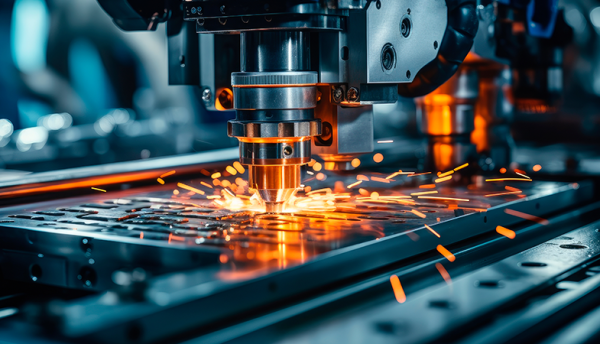In a world grappling with economic challenges and the urgent need for collective environmental responsibility, Mikko Urho, CEO of Visual Components, sheds light on how manufacturers can recalibrate their sustainability strategies.
Manufacturers are exploring new ways of conserving energy and natural resources while minimising any adverse effects on the environment. But it would be fair to say that economic conditions have made this venture all the more difficult over the last few years. Although the inflation rate of 3.7% is a marked improvement on the 9.1% figure found in the US in June 2022, prices for goods and services have still risen dramatically from 2021 levels.
Under this dark economic cloud, almost a third of businesses (32%) are lacking confidence that their organisation will play a key role in helping the global drive for net zero carbon emissions, according to new research by Visual Components of US organisations. But it’s a responsibility that requires a collective effort. To keep global temperature increases limited to 1.5C above pre-industrial levels, we’re only a little over six years away from needing a drastic 45% reduction in emissions.
Manufacturers must get their sustainability strategies back on track. With budgets squeezed, they need to invest in solutions that provide a quick ROI and support green practices.
The budgetary pinch
It’s perhaps unsurprising that green strategies among manufacturers have been placed on the back burner in the last few years, and it’s not just economic circumstances that have negatively impacted budgets and drawn the focus away from environmental concerns. The difficulty in hiring new talent, cited as one of the biggest challenges among 42% of organisations, is creating the need for higher salaries to be offered to the most skilled and experienced in the sector. According to further figures from the survey, all US companies have had to do this to ensure that key individuals don’t walk away and join a competitor.
Over a third of respondents (38%) also report that the typical cost of downtime due to unreliable legacy equipment is between $12,701 – $31,750. Ineffective utilisation of robots has also led to 17% stating that between $31,751 – $63,500 has been wasted due to a mistake when deploying them. With these kinds of figures finding their way onto the balance sheet, how can manufacturers even begin to allocate financial resources to sustainable practices?
Unsustainable strategies
Some manufacturers are implementing green initiatives to play their part in the collective effort. Results show that 36% are taking steps to reduce their power usage, which has the combined benefit of reducing costs and making a positive impact on the planet. But legacy ways of working are counteracting these efforts in many cases, including the way in which robots complete tasks on the factory floor.
Take for example the tendency to manually program robots to complete tasks such as welding, cutting, spraying or processing. With human error always a possibility, these processes could be completed incorrectly due to inaccurate programming, leading to unnecessary material waste.
In specific sectors, incorrect manual programming could lead to significant volumes of worthless products. The automotive sector, for example, utilises various robotic applications to assemble a car, which can be made up of as many as 30,000 different components. Every specific task needs to be refined to ensure the car moves down the production line and is ultimately built at the end.
The green possibilities
It’s up to manufacturers to move away from a manual mindset. Robot offline programming (OLP) technology can automate the planning and design of a new robot work cell in a virtual environment. A welding robot can complete tasks with the highest accuracy and reduce the chance of any material waste being produced.
Looking at a specific example, a CAD file of a welding cell can be imported into OLP software to define the process of a circular part being welded onto a metal workpiece. It generates the program and verifies its ability to avoid any potential collisions, even allowing staff to run it at low speed to double-check its function before deployment on repeatable instances.
Manual programming of robots can take weeks to complete before the deployments are up and running. The ROI gained from the immediate deployment of robotic applications with OLP means that goods can be put into production quicker, driving profitability and reducing costs. This then allows reinvestment in sustainable initiatives. Finally, robots can be programmed from any location, reducing the need to travel and lessening the carbon emissions associated with commuting.
A collective responsibility
Manufacturers face a critical junction: navigating economic pressures while aligning with global sustainability targets. Challenges such as inflation, talent acquisition and costly legacy equipment issues have overshadowed green initiatives, but the urgency for carbon neutrality remains. Adopting technologies like OLP can significantly mitigate manual errors, waste and downtime, accelerating ROI and freeing up resources for eco-friendly investments. This shift isn’t just a financial imperative, but a collective environmental responsibility. As the deadline for substantial emissions reductions draws ever closer, the transition from manual to automated deployments is how sustainability strategies can stay on track.
Click below to share this article

